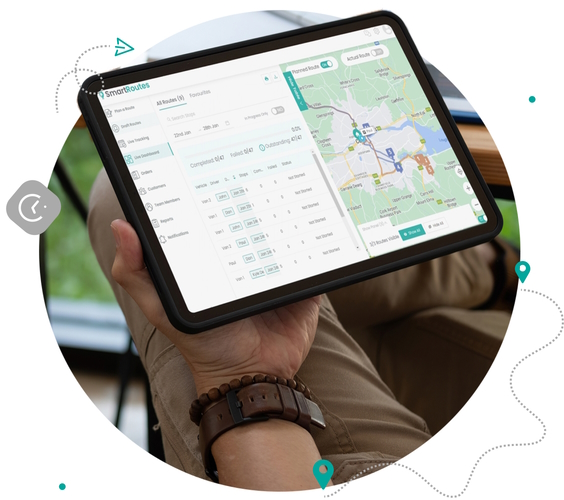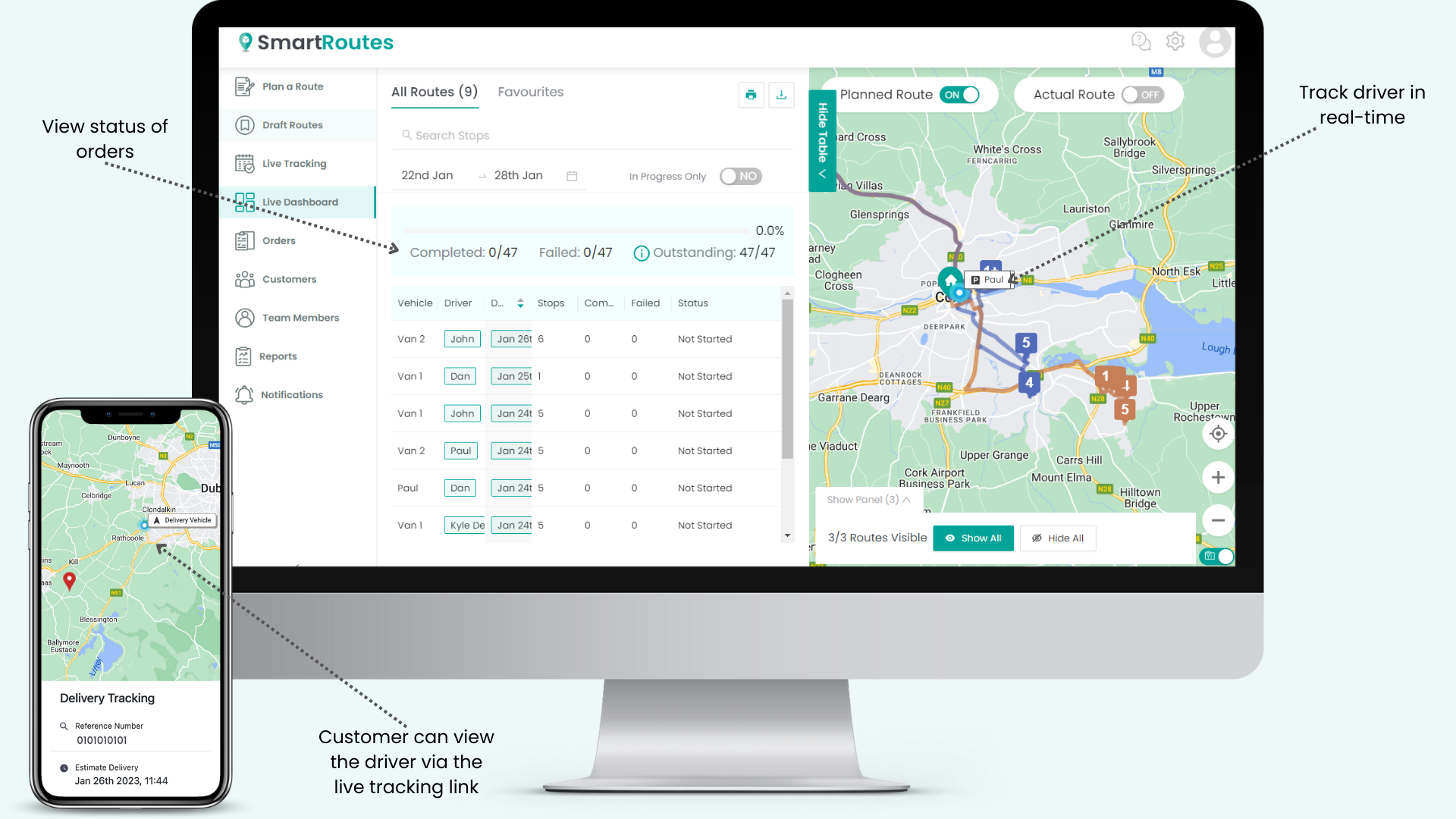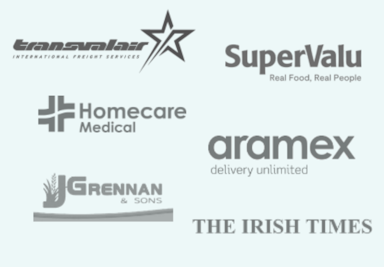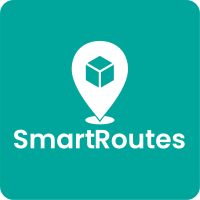Fleet tracking
Software
Live-view and analyze everything your fleet does in the field
- No credit card required
- 7 day free trial
- Cancel anytime

A command centre for your vehicles in the field
Visualize your delivery fleet with a live map to manage and adjust routes in real-time. Implement a data-driven model of fleet tracking and become less dependent on a driver's local knowledge and eliminate guesswork from your delivery operations. Optimize your routes and be more efficient, which can save you time and money in the long run.

Your drivers are your greatest asset and you need to give them great tools. Our mobile apps enables your drivers to navigate their route and capture proof of delivery. For your customers our fleet tracking functionality keeps your customers informed of their package status and live location at every step of the last mile. Helping you to build trust and loyalty and increase customer satisfaction.
Why use Fleet Tracking Software?
With fleet tracking software, you can have a real-time view of your fleet's daily operations, taking the guesswork out of knowing where your fleet is and allowing you to become more productive and efficient. Our fleet tracking system helps you to maximize your fleet's time, reduce your cost per delivery, and improve your delivery operations by pointing out issues with delivery routes in practice that can be later resolved. With our simple-to-use solution, you can centralize your data and gain insight from our live tracking map to see where and when your fleet is spending time.
Our fleet tracking software is perfect for fleet owners who are looking for simple and effective tracking solutions that integrate with their existing systems and help them increase productivity, efficiency, and profitability. At SmartRoutes, we understand the importance of having total oversight of your fleet operations, and that's why we provide you with a data-driven model of fleet tracking that allows you to manage and adjust routes in real-time. Our fleet management tracking system provides you with total oversight into what your fleet is doing in the field, giving you the power to make informed decisions that can positively impact your bottom line.
The benefits of using fleet tracking software
Gain oversight of your drivers when they have left the depot
By monitoring driver behavior you can reduce idle time, increase productivity and decrease fuel consumption
Once drivers mark a delivery as completed, automatically update the next customer with an accurate ETA
By optimizing routes, driving hours can be reduced thus reducing Tacho hours and ensuring compliance with regulations
Helps fleet managers make informed decisions about routing, dispatching, and maintenance
Customer queries can be quickly and easily resolved by customer services teams using real time tracking data
Why you should choose SmartRoutes
- Incredibly intuitive and simple-to-use platform and app
- Most affordable full-service route planning software on the market
- A dedicated customer support team that is committed to making SmartRoutes work for you
- Delivery experience functionality that will ensure you delight and retain your customers
- Highly configurable to meet the delivery needs of any business
- Increased logistics efficiency leading to a happier end user
Planning your routes with SmartRoutes
Add your vehicles and team members
Connect your order management system directly to SmartRoutes
Create customer tags, driver territories and vehicle parameters
Assign orders automatically to territories, vehicle parameters, etc
View map of customers color-coded by how recently an order was placed
Specify if you want label scanning to take place at specific order stages
View end of day reports to track driver activity, order completion and mileage reports
Delivery fleet tracking with so much more
Live vehicle map
View all your vehicles/drivers on a live map for total oversight on operations
Reporting suite
View up-to-the-minute reports on stops, driver activity, customer SMS & email and order statuses
Team management
See at a glance team availability and the best way to manage workload to maximise efficiency
Customer updates
Gather accurate ETAs and pass to customers via email, SMS or live-tracking portal
Order tracking
Filter orders by scheduled, in progress, completed or undelivered to successfully manage orders
POD notifications
Automatically email your customers after delivery with proof of delivery photo or e-signature
Live package tracking
Create a branded live package tracking portal for your customers to give them the best delivery experience possible
Zone management
Manage territories with our zone creator balancing driver workload within a zone and reducing their distance to first stop
Live route adjustment
Change routes that are in progress and update driver's app automatically
And that’s not all…check out other SmartRoutes features
Talk to a SmartRoutes expert
- Trusted by local to national logistics teams
- Proven savings of up to 33% on per-delivery cost
- Reduces carbon emissions to meet carbon neutral commitments
- No set-up fees
- Short-term commitment to test ROI

















